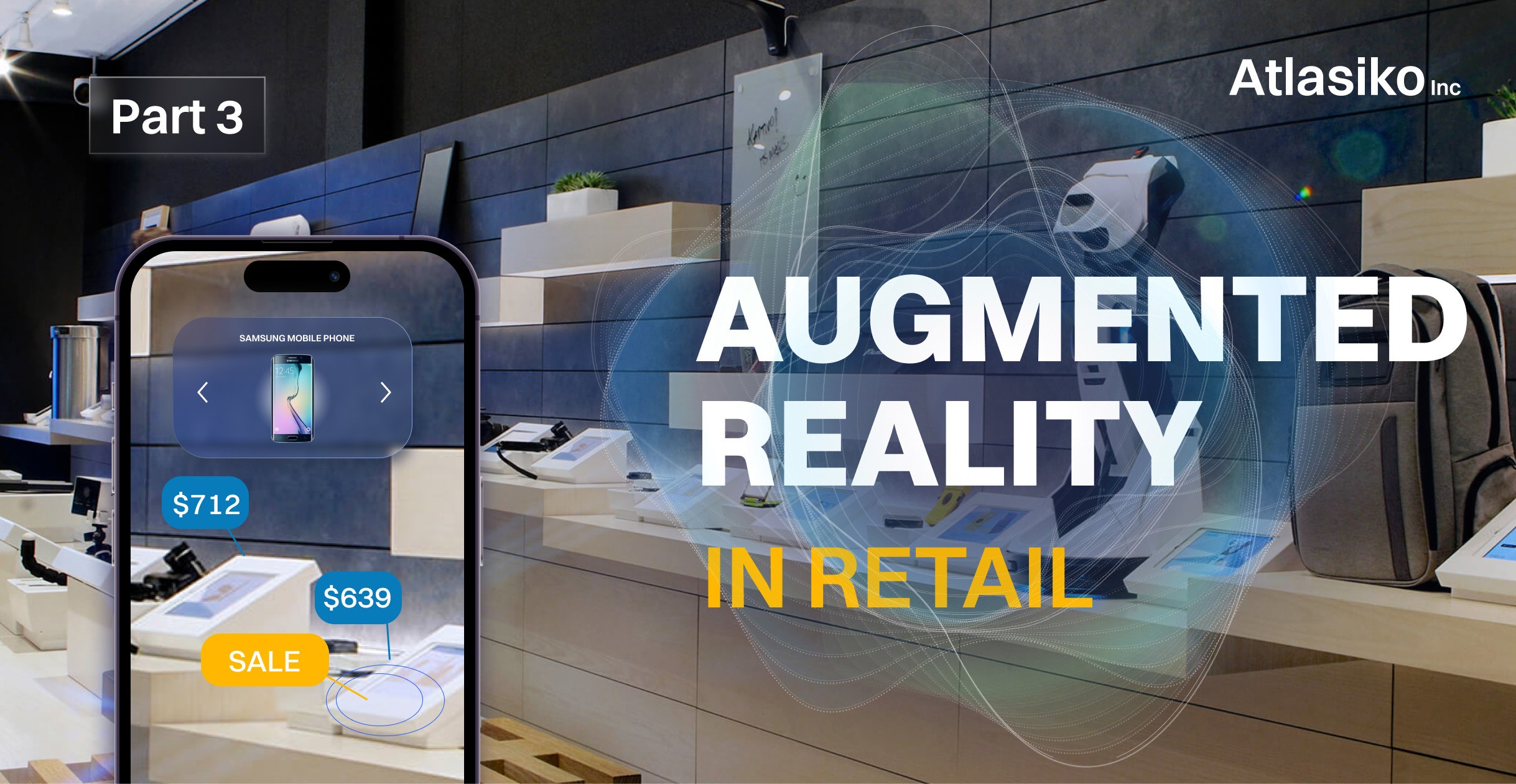
The Rise of Augmented Reality in Retail
Augmented reality (AR) is rapidly transforming the retail landscape, offering customers immersive and interactive shopping experiences. By overlaying digital information onto the real world, AR allows consumers to visualize products in their own environment, try on clothes virtually, and access detailed product information, all from the comfort of their homes. This technology is not just a novelty; it's a powerful tool for increasing sales, improving customer satisfaction, and reducing return rates.
Augmented Reality Shopping Experiences Examples
1. Virtual Try-On for Apparel and Accessories
One of the most popular applications of AR in retail is virtual try-on. Companies like Warby Parker (eyewear), Sephora (makeup), and Gucci (shoes) have successfully implemented AR features that allow customers to virtually try on products using their smartphone or tablet camera. This provides a realistic preview of how the product will look on them, eliminating the guesswork involved in online shopping. For example, Sephora's Virtual Artist app allows users to experiment with different makeup shades and looks, while Warby Parker lets customers try on glasses virtually before making a purchase.
Benefits: Reduced return rates, increased customer confidence, enhanced engagement.
2. AR Furniture Placement
Imagine being able to see how a new sofa would look in your living room before you even buy it. AR makes this possible. Retailers like IKEA and Wayfair offer AR apps that allow customers to virtually place furniture and home decor items in their homes using their smartphone camera. The app overlays a 3D model of the product onto the real-world view, allowing customers to visualize the size, style, and fit of the item within their space. This helps customers make informed purchasing decisions and reduces the likelihood of returns due to incorrect size or style.
Benefits: Improved customer satisfaction, reduced returns, increased sales of larger items.
3. Virtual Product Visualization
Beyond furniture and apparel, AR can be used to visualize a wide range of products. For example, automotive companies like BMW and Audi have developed AR apps that allow customers to explore their car models in detail. Customers can view the car from different angles, customize its features, and even "place" it in their driveway to see how it looks. Similarly, cosmetic companies often provide AR experiences for visualizing how hair dyes will look on a customer before they buy the product.
Benefits: Enhanced product understanding, increased customer engagement, improved brand perception.
4. AR-Powered Product Information
AR can also be used to provide customers with additional product information in an engaging way. By scanning a product with their smartphone, customers can access detailed specifications, user reviews, and even interactive demonstrations. For example, a food company could use AR to display nutritional information, recipes, and cooking instructions when a customer scans their product packaging. This provides a richer and more informative shopping experience, helping customers make informed decisions.
Benefits: Increased product knowledge, improved customer confidence, enhanced brand loyalty.
5. AR Shopping Games and Experiences
Some retailers are using AR to create fun and engaging shopping experiences. For example, a toy store could create an AR scavenger hunt where customers use their smartphone to find hidden virtual objects within the store. Or, a clothing retailer could create an AR game where customers can virtually dress up their avatar in different outfits. These types of experiences can attract new customers, increase brand awareness, and make shopping more enjoyable.
Benefits: Increased foot traffic, improved brand awareness, enhanced customer engagement.
6. AR Navigation in Stores
Navigating large retail stores can sometimes be challenging. AR can help customers find what they're looking for quickly and easily. By using AR-powered navigation apps, customers can receive turn-by-turn directions to specific products or departments within the store. This can improve the overall shopping experience and reduce frustration.
Benefits: Improved customer experience, increased efficiency, reduced customer frustration.
7. AR Packaging and Unboxing Experiences
AR can transform product packaging into an interactive experience. Customers can scan the packaging with their smartphone to unlock exclusive content, such as behind-the-scenes videos, product tutorials, or even augmented reality games. This can enhance the unboxing experience and create a memorable connection with the brand. For example, a cereal box could come to life with an AR game, or a cosmetics package could provide a virtual makeup tutorial.
Benefits: Enhanced brand engagement, increased customer loyalty, memorable unboxing experience.
The Benefits of Augmented Reality Shopping
Implementing AR shopping experiences can provide retailers with a number of significant benefits:
- Increased Sales: AR can help customers make more informed purchasing decisions, leading to increased sales conversions.
- Reduced Return Rates: By allowing customers to visualize products in their own environment, AR can reduce the likelihood of returns due to incorrect size, style, or fit.
- Improved Customer Satisfaction: AR provides a more engaging and informative shopping experience, leading to increased customer satisfaction.
- Enhanced Brand Awareness: AR experiences can help retailers stand out from the competition and create a memorable brand experience.
- Data Collection: AR applications can collect valuable data about customer preferences and behavior, which can be used to improve product development and marketing strategies.
The Future of AR in Retail
As AR technology continues to evolve, we can expect to see even more innovative applications in the retail industry. From personalized shopping experiences to fully immersive virtual stores, the possibilities are endless. Retailers who embrace AR now will be well-positioned to succeed in the future of shopping.

0 Comments